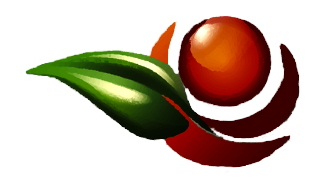Why and how to use a grelinette?
The Grelinette: An essential tool for deep soil cultivation
In this article, I'm going to tell you about an essential tool on our biointensive micro-farm: the grelinette. I'll show you how we use this tool on our farm to aerate the soil without turning it over. The grelinette is a real ally in promoting soil oxygenation, mineralization and flexibility, without having to resort to more invasive tillage techniques.
How do I use a grelinette effectively?
To get the most out of your grelinette, we recommend you follow these tips:
1: Plant the grelinette by stepping backwards: When using the grelinette, walk backwards on the board to drive the tool into the soil. It's preferable to avoid planting the planter head-on, as this can be dangerous and inefficient.
2: Gently lift the root ball: The aim of the grelinette is not to lift the root ball completely, but to aerate it slightly. Simply lift the clod just enough to allow better circulation of air and nutrients. Don't try to break up the clods or lift the soil excessively.
3: Spacing between soil blocks: When planting the grelinette, leave sufficient space between the soil blocks. A spacing of around 40 to 50 cm is recommended. This allows you to see the clods rise in their entirety and effectively aerate the soil.
By integrating the grelinette into your cultivation practices, you'll promote soil health and achieve better results on your farm.
In addition to improving soil aeration and oxygenation, the use of the grelinette offers an additional advantage on our farm. By breaking rodent galleries, this tool helps to disrupt their activity. In our cropping systems, where tillage is limited to the surface, this can lead to an increase in rodent populations. By breaking their galleries, we disturb them and help to manage their presence in a natural way.
Tips for choosing and using a quality grelinette
When choosing a grelinette, be sure to consider the following:
1: Nature of teeth: Choose wrought-iron teeth rather than bent or hollow iron. Wrought-iron teeth are stronger and more resistant. They are less likely to break or bend, guaranteeing greater tool durability. Avoid grelinettes with straight teeth, preferring those with an appropriate curvature.
2: Grelinette width: A 75 cm wide grelinette is recommended for efficient use on cultivation beds. This width enables you to work over a sufficiently large area in a single pass, making your work easier.
3: Handle care: Even with quality teeth, you may need to replace the handle of your grelinette over time. Make sure you choose a sturdy, easily replaceable handle. You should also maintain the handle regularly to avoid premature deterioration.
By following these tips, you'll be able to choose a quality grelinette that will meet your needs and support you in your gardening work. Don't forget that using a grelinette requires a certain amount of practice to get the most out of it. Be patient and adjust your technique as you gain experience.
Our video on the grelinette
To go further
100% online training in organic market gardening
Our training courses are like ready-made kits adapted to France (climate, laws, sales methods, organization). They are designed for market gardeners who want to improve their results, and also for those who have a project in mind.
An internship in market gardening
As a trainee, you'll be able to get involved in all stages of vegetable production, from seed preparation to tillage and fertilization.




